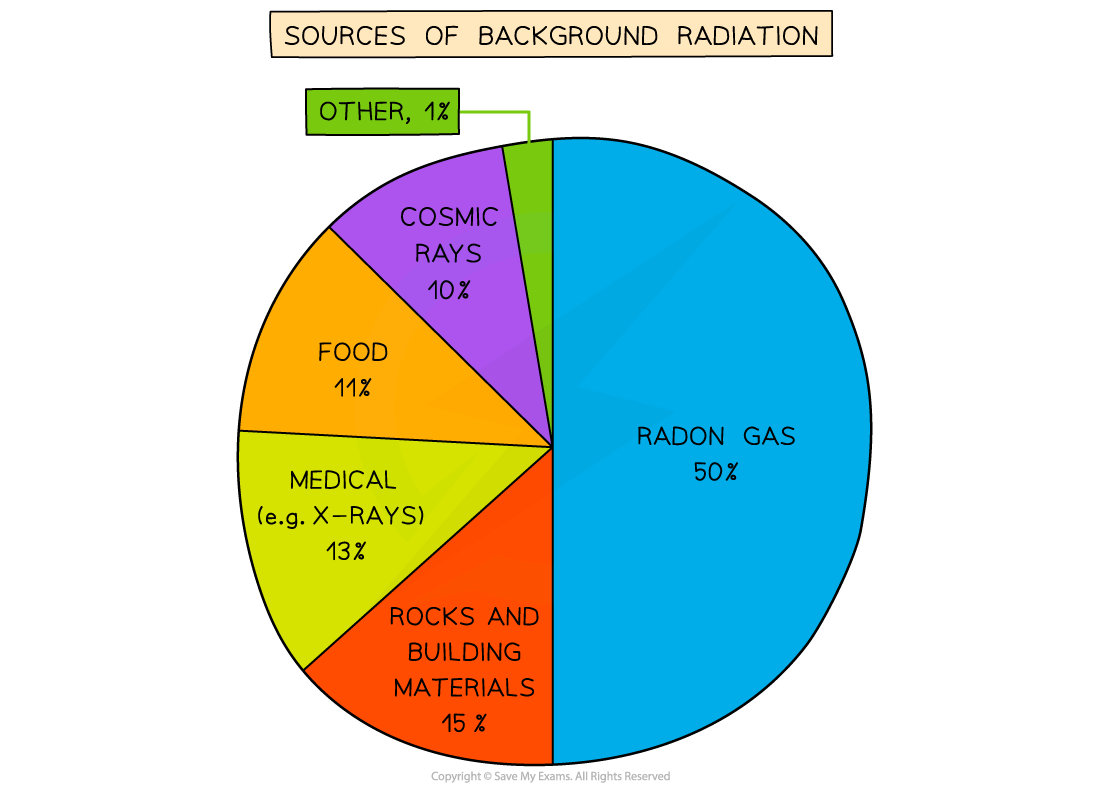- 翰林提供学术活动、国际课程、科研项目一站式留学背景提升服务!
- 400 888 0080
AQA A Level Physics复习笔记8.1.5 Background Radiation
Background Radiation
- Background radiation describes the low level of radiation present in the surroundings at all times
- There are two types of sources of background radiation:
- Natural sources
- Man-made sources
Natural Sources
- Radon gas from rocks and soil
- Heavy radioactive elements, such as uranium and thorium, occur naturally in rocks in the ground
- Uranium decays into radon gas, which is an alpha emitter
- This is particularly dangerous if inhaled into the lungs in large quantities
- Cosmic rays from space
- The sun emits an enormous number of protons every second
- Some of these enter the Earth’s atmosphere at high speeds
- When they collide with molecules in the air, this leads to the production of gamma radiation
- Other sources of cosmic rays are supernovae and other high energy cosmic events
- Carbon-14 in biological material
- All organic matter contains a tiny amount of carbon-14
- Living plants and animals constantly replace the supply of carbon in their systems hence the amount of carbon-14 in the system stays almost constant
- Radioactive material in food and drink
- Naturally occurring radioactive elements can get into food and water since they are in contact with rocks and soil containing these elements
- Some foods contain higher amounts such as potassium-40 in bananas
- However, the amount of radioactive material is minuscule and is not a cause for concern
Man-Made Sources
- Medical sources
- In medicine, radiation is utilised all the time
- Uses include X-rays, CT scans, radioactive tracers, and radiation therapy
- Nuclear waste
- While nuclear waste itself does not contribute much to background radiation, it can be dangerous for the people handling it
- Nuclear fallout from nuclear weapons
- Fallout is the residue radioactive material that is thrown into the air after a nuclear explosion, such as the bomb that exploded at Hiroshima
- While the amount of fallout in the environment is presently very low, it would increase significantly in areas where nuclear weapons are tested
- Nuclear accidents
- Accidents such as that in Chernobyl contributed a large dose of radiation into the environment
- While these accidents are now extremely rare, they can be catastrophic and render areas devastated for centuries

In the UK, radon gas is by far the largest proportion of background radiation, whereas radiation due to nuclear waste and fallout accounts for less than 1%
Corrected Count Rate
- Background radiation must be accounted for when taking readings in a laboratory
- This can be done by taking readings with no radioactive source present and then subtracting this from readings with the source present
- This is known as the corrected count rate
转载自savemyexams

最新发布
© 2025. All Rights Reserved. 沪ICP备2023009024号-1









